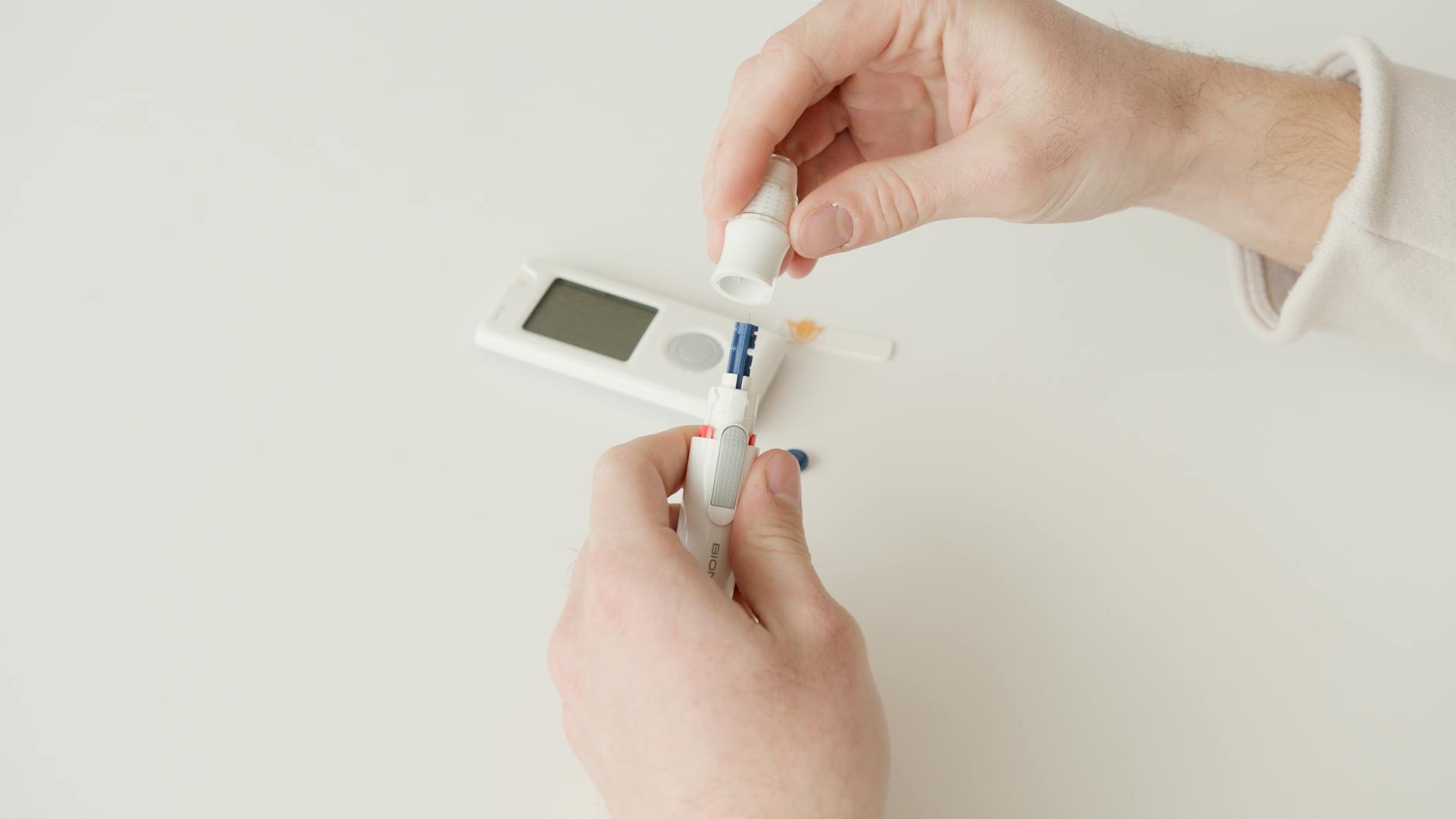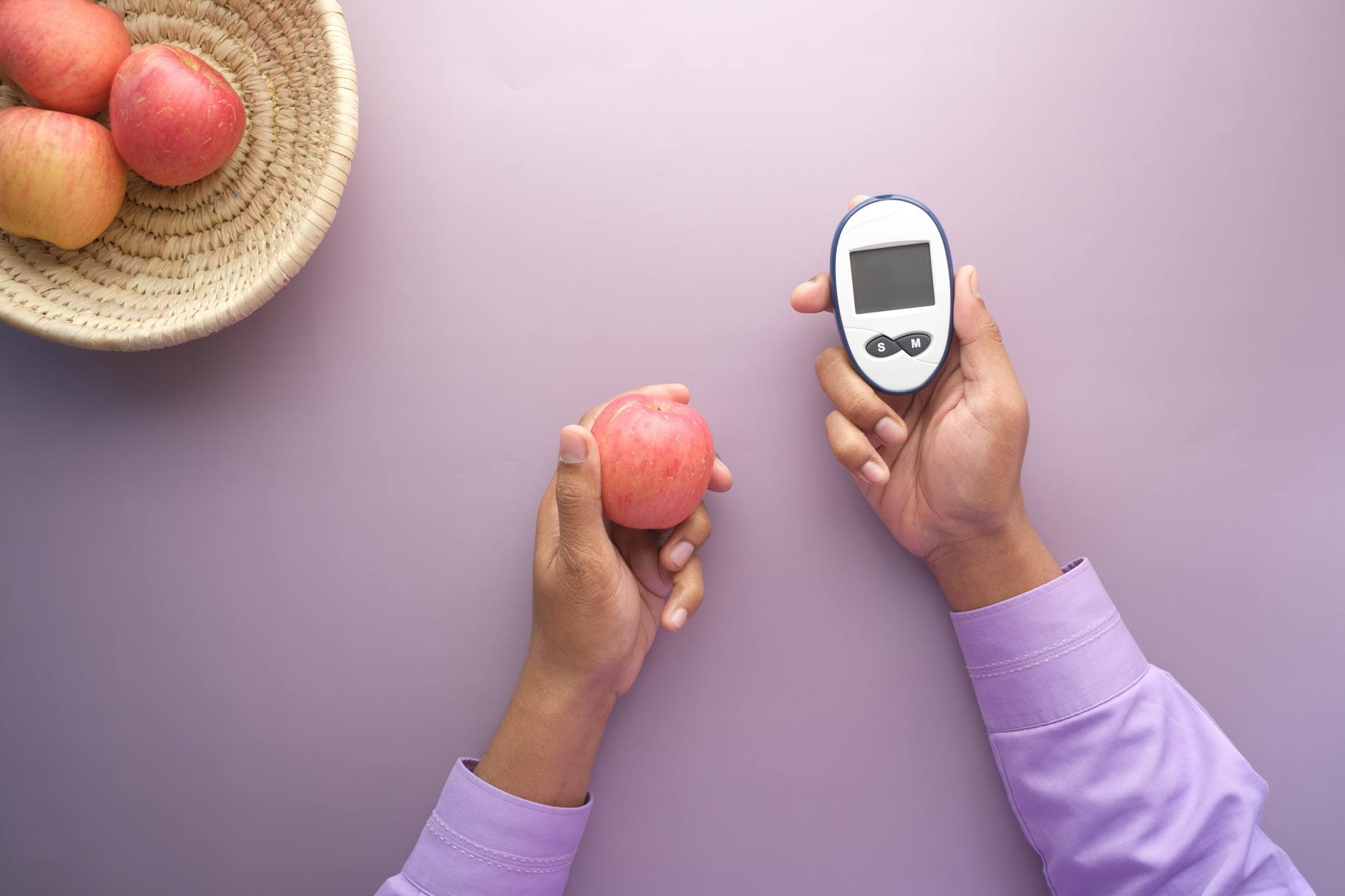Diabetes 1 vs Diabetes 2: Which is Worse?

Diabetes is a complex condition with many misconceptions, especially when comparing Type 1 and Type 2. Both can lead to serious complications, but one isn’t automatically “worse” than the other—it depends on how they’re managed. Type 1 requires insulin from day one, while Type 2 often develops gradually and may be controlled with lifestyle changes early on. This post will break down the key differences and risks to help you make sense of this critical health question.
Overview of Diabetes Types
Diabetes impacts millions globally and comes in multiple forms, each with distinct causes and management needs. Understanding the differences is key to answering the question: which is worse—Type 1 or Type 2 diabetes? Let’s take a closer look at these two main types.
What is Type 1 Diabetes?

Photo by Artem Podrez
Type 1 diabetes happens when the immune system attacks insulin-producing cells in the pancreas. Think of it as an internal misfire—your body mistakes these cells for invaders. The result? Your pancreas makes little to no insulin, which is vital for regulating blood sugar levels.
Usually, Type 1 diabetes shows up early in life, often during childhood or adolescence. However, it’s not just a “kids-only” condition; adults can get it too, though less commonly. According to current research, about 5-10% of those with diabetes have Type 1. Learn more about the autoimmune nature of Type 1 diabetes.
Symptoms often come on fast and may include extreme thirst, exhaustion, and unexplained weight loss. Since Type 1 is not linked to lifestyle factors, it’s a condition that requires lifelong insulin therapy and careful monitoring.
What is Type 2 Diabetes?
Unlike Type 1, Type 2 diabetes is primarily linked to lifestyle factors and genetic predisposition. It occurs when the body becomes resistant to insulin or doesn’t produce enough of it. Imagine trying to unlock a door with a rusty key—that’s how inefficiently your body uses insulin. Over time, high blood sugar levels can lead to serious health problems if untreated.
Type 2 diabetes typically develops over many years and is more common in individuals over 45. However, it’s increasingly being diagnosed in younger age groups as rates of obesity and sedentary lifestyles rise. Factors like being overweight, inactive, or having a family history of diabetes significantly increase the risk. Explore Type 2 diabetes risk factors here.
Unlike Type 1, Type 2 may not always require insulin immediately. Many people manage it through diet, exercise, and medications initially. But left unchecked, it can progress to requiring insulin therapy and lead to complications like nerve damage and kidney disease.
By understanding these two forms of diabetes, we can better compare their challenges and implications, setting the stage for deeper exploration of the topic at hand.
Comparative Severity of Type 1 and Type 2 Diabetes
Both Type 1 and Type 2 diabetes come with immediate health risks that can escalate quickly if left untreated. While their long-term complications are often similar, the acute challenges they present differ significantly. Understanding these risks can help shed light on the severity of each condition.
Immediate Health Risks of Type 1 Diabetes

Photo by Mikhail Nilov
Type 1 diabetes poses an immediate threat due to its potential to cause diabetic ketoacidosis (DKA). This condition occurs when the body, unable to get energy from glucose, starts breaking down fat at a dangerously rapid pace. As fats are broken down, they produce ketones, which can build up to toxic levels in the blood. DKA often develops quickly—sometimes within hours—and can be life-threatening if untreated.
Some warning signs of DKA include:
- Nausea and vomiting.
- Severe abdominal pain.
- Rapid breathing.
- Confusion or loss of consciousness.
The condition typically requires urgent medical attention, often involving intravenous insulin and fluids to stabilize blood sugar and hydrate the body. Managing Type 1 involves constant vigilance, as skipped insulin doses or periods of illness can put individuals at risk of such acute crises. Learn more about the risks of Type 1 diabetes.
Immediate Health Risks of Type 2 Diabetes
Type 2 diabetes, although slower to escalate in most cases, can lead to immediate dangers like the hyperglycemic hyperosmolar state (HHS). HHS is characterized by extremely high blood sugar levels, often exceeding 600 mg/dL, without significant ketone production. This condition usually emerges in older adults or those with a history of poor glucose control and can rapidly lead to dehydration and altered mental states.
Key symptoms of HHS include:
- Intense thirst and dry mouth.
- Frequent urination, which may later stop as dehydration worsens.
- Confusion, lethargy, or even seizures.
Unlike DKA, HHS develops over days or weeks, but its progression can still be fatal without intervention. It often requires hospitalization for rehydration and gradual correction of blood sugar levels. Lifestyle factors and a lack of early symptoms sometimes leave Type 2 diabetes undiagnosed until such emergencies occur. Explore the complications linked to Type 2 diabetes.
Long-term Complications of Each Type
Diabetes isn’t just about managing blood sugar levels day-to-day. Over time, chronic complications can arise, affecting multiple systems in the body. These complications differ slightly between Type 1 and Type 2 diabetes but can be life-changing for those who experience them. Here’s a closer look.
Long-term Effects of Type 1 Diabetes

Photo by Nataliya Vaitkevich
Type 1 diabetes develops early and demands insulin dependency, but the story doesn’t end there. Many experience microvascular issues, which impact smaller blood vessels over time. These include:
- Neuropathy: Nerve damage often causes sensations like tingling, numbness, or even burning pain in extremities. Left untreated, it could lead to severe nerve dysfunction, increasing the risk of foot ulcers or infections.
- Retinopathy: Diabetes can damage the tiny vessels in your eyes, leading to vision loss or even blindness in advanced cases. It’s one of the most common complications for patients with long-term diabetes.
- Cardiovascular Disease (CVD): Heart disease or stroke risk significantly rises for those with Type 1. Over time, poorly managed blood sugar contributes to plaque build-up in arteries, narrowing them and straining the cardiovascular system.
The challenges don’t only stop at these issues. Kidney damage (nephropathy) is also a concern as elevated glucose levels can harm filtration systems in the kidneys. Up to 50% of people with Type 1 diabetes will face a serious complication in their lifetime. Learn more about Type 1 diabetes complications here.
Long-term Effects of Type 2 Diabetes
Type 2 diabetes commonly develops later in life but hidden dangers often accumulate long before diagnosis. While the complications overlap with Type 1, Type 2 diabetes uniquely amplifies macrovascular risks due to its ties with metabolic syndrome, obesity, and hypertension.
- Kidney Disease: High blood sugar damages the kidneys’ filtration ability over time, leading to chronic kidney disease or even kidney failure in severe cases. Regular monitoring of kidney function becomes crucial.
- Heart Disease: Plaque build-up in arteries increases risk for heart attacks or strokes. People with Type 2 diabetes are twice as likely to develop cardiovascular issues compared to those without diabetes.
- Vision Problems: Like with Type 1, diabetic retinopathy is a key concern. However, Type 2 patients are also prone to cataracts and glaucoma due to prolonged periods of high glucose levels.
Other complications include impaired wound healing, which can make even minor cuts or sores lead to significant infections. This increases the risk of foot amputations in long-term cases. Discover how Type 2 diabetes impacts long-term health here.
Both Type 1 and Type 2 diabetes carry serious long-term risks. The key is diligent blood sugar management and regular health checks to minimize potential damage.
Management and Treatment Approaches
Managing diabetes isn’t a one-size-fits-all solution. Effective treatment depends on the type of diabetes you have, with stark differences between how Type 1 and Type 2 are handled. Let’s break it down.
Management of Type 1 Diabetes

Photo by Artem Podrez
Managing Type 1 diabetes revolves around insulin therapy, which is crucial because the body doesn’t produce insulin. Patients typically require multiple daily injections (MDI) or an insulin pump for continuous insulin delivery. According to the Mayo Clinic, this can include a mix of long-acting and rapid-acting insulins to mimic a natural insulin response.
Blood sugar monitoring plays another pivotal role. You’ll need to check levels several times daily—either through a glucometer or using a continuous glucose monitor (CGM). CGMs provide real-time updates and alerts if blood sugar spikes or drops.
Lifestyle adjustments complement these medical approaches. Healthy eating is key, with a focus on carbohydrate counting to balance insulin doses. Regular exercise helps regulate blood sugar, but it also requires close monitoring to avoid hypoglycemia during workouts.
You can’t overlook the importance of education. Programs like diabetes self-management education teach individuals how to adapt to various circumstances, from adjusting insulin during illnesses to handling emergencies like diabetic ketoacidosis (DKA). This proactive approach ensures better blood sugar control and quality of life.
Management of Type 2 Diabetes
Type 2 diabetes management initially emphasizes lifestyle changes. Consider this the cornerstone for avoiding complications and delaying the need for medication. The CDC highlights strategies like adopting healthier eating habits, increasing physical activity, and achieving weight loss goals. These adjustments not only improve blood sugar levels but also address underlying conditions like obesity and hypertension.
For many, medications enter the picture when lifestyle changes aren’t enough. Oral medications such as metformin are first-line treatments. They work by improving the body’s insulin sensitivity and reducing glucose production in the liver. Other drug classes include SGLT2 inhibitors, which help the body eliminate excess sugar through urine, and GLP-1 receptor agonists, which regulate insulin and appetite.
Over time, some individuals may require insulin therapy, especially as beta cells in the pancreas decline. According to the American Heart Association, this typically happens in the later stages of the disease. Insulin regimens for Type 2 diabetes tend to be less intensive than those for Type 1, but they are no less crucial to disease management when needed.
Monitoring is also integral for Type 2 diabetes. Regular glucose checks guide treatment decisions and help prevent complications like the hyperglycemic hyperosmolar state (HHS). Pair this with annual tests for kidney function, eye health, and cardiovascular risks to maintain a comprehensive care strategy.
Both forms of diabetes demand consistency, vigilance, and adaptability. With the right tools and habits, effective management is within reach, helping reduce the risks associated with either condition.
Psychosocial Impact of Diabetes
Dealing with diabetes involves more than managing blood sugar levels; it also deeply affects an individual’s mental and social well-being. The emotional toll can often go unnoticed but plays a critical role in how people cope with either Type 1 or Type 2 diabetes. Let’s break down how each type uniquely impacts mental health and psychosocial dynamics.
Mental Health Challenges in Type 1 Diabetes

Photo by Brett Sayles
Type 1 diabetes frequently begins in childhood or adolescence—a phase already filled with emotional challenges. Adding a lifelong condition into the mix often leads to heightened risks of mental health issues such as anxiety, depression, and burnout. Why? The constant need for monitoring, insulin injections, and meal planning can create a sense of relentless pressure.
A specific and growing concern is diabetes distress—a condition that emerges from feeling overwhelmed by the relentless demands of diabetes management. Studies highlight that people with Type 1 diabetes are at a higher risk of developing eating disorders like diabulimia, where insulin is skipped to control weight. This can result in detrimental health consequences. Explore more about managing mental health with Type 1 diabetes here.
Common psychological conditions linked to Type 1 diabetes include:
- Depression: Feeling “trapped” by diabetes responsibilities can lead to pervasive sadness or hopelessness.
- Anxiety: Fear of low blood sugars (hypoglycemia) can result in heightened stress or avoidance of daily activities.
- Burnout: Constant vigilance over blood sugar control can take a toll, leading many to avoid care altogether.
Family and peer support play critical roles here. Adolescents with supportive environments tend to self-manage better, while those without such networks may struggle more significantly. Learn about the elevated risk for mental health conditions tied to Type 1 diabetes.
Mental Health Challenges in Type 2 Diabetes
Type 2 diabetes presents its own set of psychosocial hurdles, often tied to lifestyle factors and societal stigma. The perception that Type 2 diabetes is “self-inflicted” can lead to feelings of shame, embarrassment, or social isolation. For many, this stigma becomes a barrier to seeking help or staying committed to treatment plans.
On top of stigma, fluctuations in blood sugar may cause mood swings, irritability, and fatigue. People often describe struggling to think clearly or feeling emotionally “on edge.” This makes it hard to maintain relationships, perform at work, or stick to daily routines.
Key mental health concerns in Type 2 diabetes include:
- Depression: Those with Type 2 diabetes are 2-3 times more likely to face depression than the general population. Learn more from the CDC about diabetes and mental health.
- Anxiety: Feelings of stress surrounding meal planning, medication, or long-term complications can weigh heavily.
- Guilt or Shame: Internalized stigma over lifestyle choices contributing to their diagnosis can create emotional burdens.
For older adults, managing the condition while juggling other life responsibilities can feel overwhelming. This is especially true for those with limited resources or social support systems, which further compounds mental health impacts. Community support and professional counseling can play significant roles in reducing these feelings and building resilience. Understand the link between Type 2 diabetes and mental health issues here.
Diabetes doesn’t just affect the body—it changes how people see themselves and interact with the world. Addressing these psychosocial factors is just as important as monitoring blood sugar levels for better overall well-being.
Conclusion: Which is Worse?
When weighing Type 1 and Type 2 diabetes, it’s clear each presents unique challenges. Both conditions demand lifelong management, involve serious health risks, and significantly impact quality of life. However, understanding their key differences helps shed light on which might be considered more severe under specific circumstances.
Immediate and Long-term Risks Compared
Type 1 diabetes generally carries a higher immediate risk due to the potential for diabetic ketoacidosis (DKA), a life-threatening condition. Without careful insulin management, things can quickly spiral out of control. On the flip side, Type 2 diabetes usually progresses more slowly, but this delayed onset may cause complications to accumulate silently until a crisis, like the hyperglycemic hyperosmolar state (HHS), arises.
When you look at the long term, complications such as kidney disease, nerve damage, and heart disease are common to both types. However, Type 2 diabetes often coincides with obesity and hypertension, amplifying macrovascular risks, like heart attacks. This makes Type 2 particularly dangerous later in life if left untreated.
For a deeper dive into how these risks stack up, check out this guide from MedicineNet.
Lifestyle vs. Dependence on Insulin
Another factor to consider is how each type integrates into daily life. Type 1 demands complete reliance on insulin. Missing doses can lead to rapid dangers, meaning strict routines and constant awareness are non-negotiable.
Type 2, in many cases, starts with lifestyle adjustments—better eating habits, weight management, and increased activity. Medication or insulin may not be initially required, but over time, unchecked Type 2 diabetes can lead to intensive treatments similar to Type 1.
Interested in more about the lifestyle aspect? Learn about managing the differences here.
Which is Actually Worse?
It’s not straightforward to declare one type unequivocally worse than the other. Instead, the severity depends on factors like early detection, treatment access, and personal commitment to managing the disease. Type 1 may pose graver short-term risks, while Type 2 might lead to wider systemic issues over time, particularly if unmanaged.
For those living with either condition, focusing on management and regular check-ins with healthcare providers is the real game-changer. Use the tools, treatments, and knowledge available to make informed decisions about diabetes care.
For a broader comparison, see this breakdown on differences between Type 1 and Type 2 diabetes.

Photo by Towfiqu barbhuiya
Conclusion
There’s no one-size-fits-all answer to whether Type 1 or Type 2 diabetes is worse. Each carries its own set of challenges and risks that vary by individual.
Short-term, Type 1 poses higher dangers like diabetic ketoacidosis (DKA), requiring constant insulin management. Type 2 may progress slower, but its long-term complications can silently worsen without clear symptoms early on.
Regardless of type, proper management, early diagnosis, and access to care are vital. Both conditions are serious, but with the right approach, they can be effectively controlled. Consult with healthcare professionals to understand your unique health needs and build a plan for living well.




